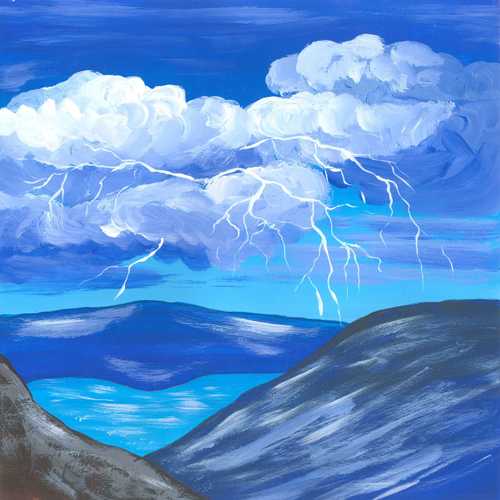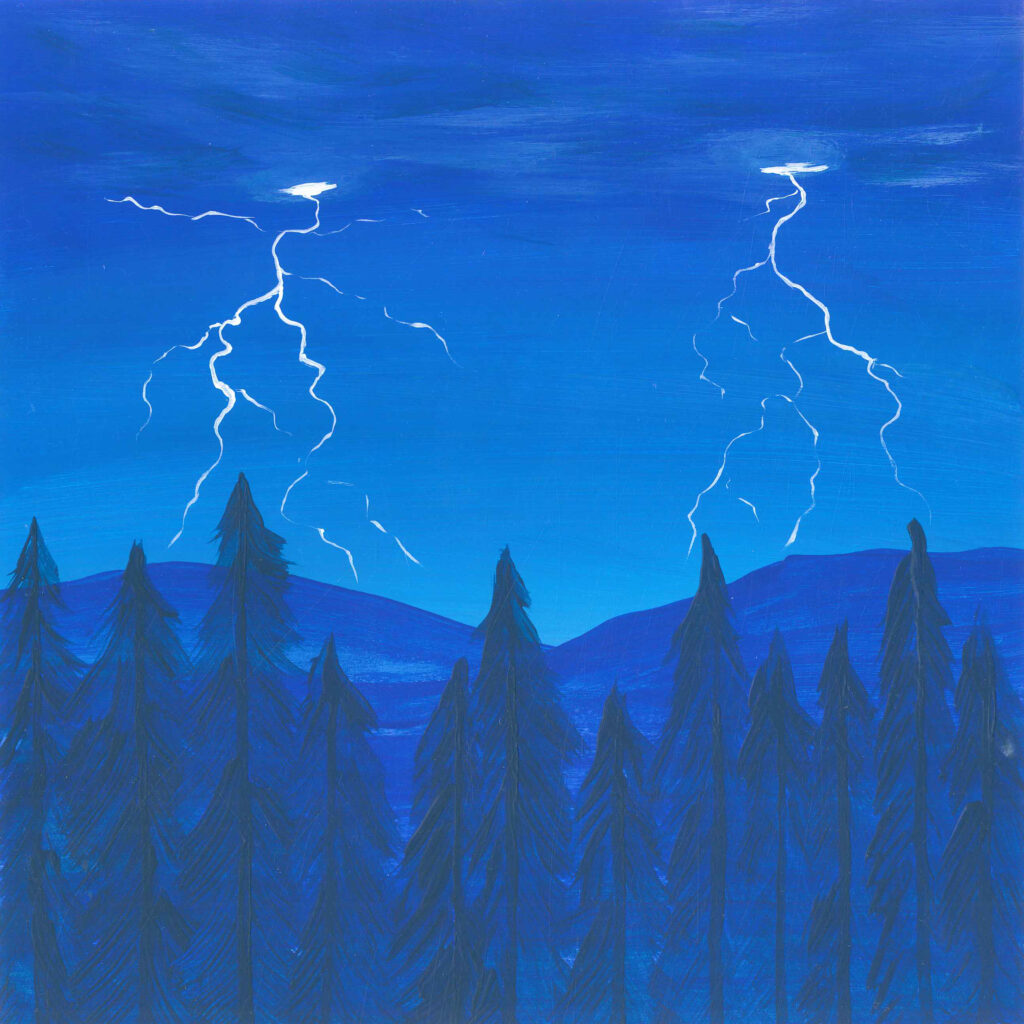
Sannu*, friend. 👋
How can we harness the benefits of the power of listening? Can human activity cause earthquakes? What are the risks of improperly regulated carbon sequestration? How could governments encourage the lifestyle changes necessary to mitigate against the climate crisis?
Read on to find out.
*A casual greeting in Nepali, one of the official languages of Sikkim, India.
Soundscape of the week
⛈️ ‘Thunderstorm in Himalayas’:
The patter of evening rain and grumble of thunder creates an unexpectedly calming atmosphere in this recording by Jan Brelih, made in the Himalayan Indian state of Sikkim – an independent kingdom in its own right until 1975. (Watch Satyajit Ray’s documentary “paean of praise” to the then-country here.)
This soundscape, documenting the sounds of a “remote mountain meadow surrounded by ancient pine trees”, 3,200m above sea level, would be ideal to listen to while curled up with a book on a Sunday afternoon (no matter your elevation).
Articles and essays
👂 “Your sound space could be your bed, or a corner of your living room. Maybe you’ll have to adjust something for a few minutes, pull the plug of the refrigerator (don’t tell a soul, and be sure to replug). […] Maybe you’ll have to get the jump on the natives by waking up earlier. Maybe you’ll even have to travel some. But sitting quietly in a place where ambient sounds don’t trigger negative responses is worth the effort of getting there.”
‘The Listening Book: Awakening Creativity and Opening Up the World around Us’ provides an introduction to WA Mathieu’s The Listening Book: Discovering Your Own Music, from 1991. “A great tool for those willing to discover (or rediscover) ‘the power of listening as an instrument of self-discovery and personal transformation’”, the book offers a range of advice “intended to help us appreciate the connection between sound, music, and everyday life”, in the form of “short personal essays, diarized snippets of daily life, flashbacks, encouragements, tips on aspects of music-making, and playful exercises”.
🌊 “Deep, rolling waves. Carrying the ocean’s song to the shore. Smooth pebbles caressed by time”.
The simplicity of ‘North Sea Waves’ – a recent episode of earth.fm podcast Wind Is the Original Radio – also provides its power: nothing but the hiss and boom of the breakers at high tide and the tumbling of displaced stones. This unbroken cycle creates a cleansing sensation. What’s more, as recordist Mat Eric Hart explains, the “wonderful deep roar” of this recording is a consequence of “the wooden groynes that have been installed along the beach shoreline.
“They create resistance to the force of the ocean and reduce the amount of longshore drift, helping sand to build up in front of the cliffs. They have been constructed to preserve the shoreline and to protect the dunes and cliffs from erosion. […] Intervention techniques such as groynes can be used to add an element of control to the situation, and for me demonstrates a constructive collaboration between man, technology and nature which demonstrates how we can create sustainable spaces for future generations to benefit from.”
Additional episodes of the podcast are available on Apple and Google podcasts, Spotify, and Stitcher, with new installments released every Friday.

From the extended community
⛰️ ‘Explained: Climate Change, Earthquakes and Hydropower in the Himalayas’ investigates “new research [which] suggests that climate change may even be having an effect on the frequency of earthquakes in the region”, in part due to the suppression of seismicity due to “the huge weight of water present during the monsoon season” and the presence of glaciers.
“Earthquakes can [also] be induced by human activity, […] [including by the presence of] hydropower dams, due to […] what is called reservoir-induced seismicity (RIS).” With the 100 hydropower dams currently operational across the Himalayan region projected to be increased more than sevenfold, making the area the most dam-dense in the world, it is likely to become increasingly at risk from ‘complex disasters’ – situations where “one disaster, such as an earthquake, sets off another, such as a landslide or glacial lake outburst flood (GLOF)”.
🛢️ In the US, “Chemical companies [are] rush[ing] to claim $12 billion authorized in the Inflation Reduction Act to create massive underground storage structures for potentially deadly carbon [dioxide gas]”; long read ‘A Crucial Climate Technology Provokes Fears in Oil Country’ digs into the potential risks involved in the hurried adoption of carbon sequestration:
“According to both environmental officials and carbon capture experts, […] many of the projects are likely to face either serious delays while waiting for safety assessments or — worse — be waved through with less than thorough scrutiny. […] Some climate activists — who’ve long claimed that carbon capture is merely a way to perpetuate a fossil-fuel economy — say the lack of regulatory apparatus is a sign of rushed decision-making. And they say it could put low-income residents and communities of color at risk.”
🦅 In ‘Threatened Birds’, a discussion of declining avian populations, Jessica Rath suggests appropriate big-picture responses to the current sixth mass extinction:
“Governments should make concerted efforts encouraging people to change their habits and lifestyles, to even realize how dire the situation is. We’re asleep in a burning building. […] Elementary schools should have classes that encourage empathy. Classes that teach our connection to all living beings, whether plant or forest or animal, and that any harm inflicted on any of them ultimately harms us humans. Governments should heavily tax anybody who uses private airplanes or yachts for travel, and make it impossible for huge corporations to exploit the Earth at our peril.
“I don’t know how this can happen, but it is necessary if future generations want to have a decent life.”
(Rath thoughtfully ends by sharing Los Incas’ version of ‘El cóndor pasa’, “with the hope that it will make you feel better after this upsetting post”.)
👉 Follow us on Twitter for a daily dose of nature-sound inspiration!
How to support earth.fm
All 600+ of our curated, immersive soundscapes are free to listen to, but if you want to help us grow new forests, please become a supporter!
There are three options available, and you will also be able to favorite recordings, create and share playlists, and many other perks – plus a big surprise is coming exclusively to members in the next few weeks!
Until next time, we wish you a regenerative week. 🙏
With best wishes,
Neil and Team earth.fm
Reach out on hello@earth.fm 👋
Forward this newsletter to anyone who would appreciate it ✉️
Join the conversation with the Earth.fm community 🤝
Submit a recording 🎤
Follow us on Twitter. Instagram and YouTube 💻
Listen to nature sounds in your browser by installing our free extension 🎧
Earth.fm is a completely free streaming service of 1000+ nature sounds from around the world, offering natural soundscapes and guided meditations for people who wish to listen to nature, relax, and become more connected. Launched in 2022, Earth.fm is a non-profit and a 1% for the Planet Environmental Partner.
Check out our recordings of nature ambience from sound recordists and artists spanning the globe, our thematic playlists of immersive soundscapes and our Wind Is the Original Radio podcast.
You can join the Earth.fm family by signing up for our newsletter of weekly inspiration for your precious ears, or become a member to enjoy the extra Earth.fm features and goodies and support us on our mission.
Subscription fees contribute to growing our library of authentic nature sounds, research into topics like noise pollution and the connection between nature and mental wellbeing, as well as funding grants that support emerging nature sound recordists from underprivileged communities.

